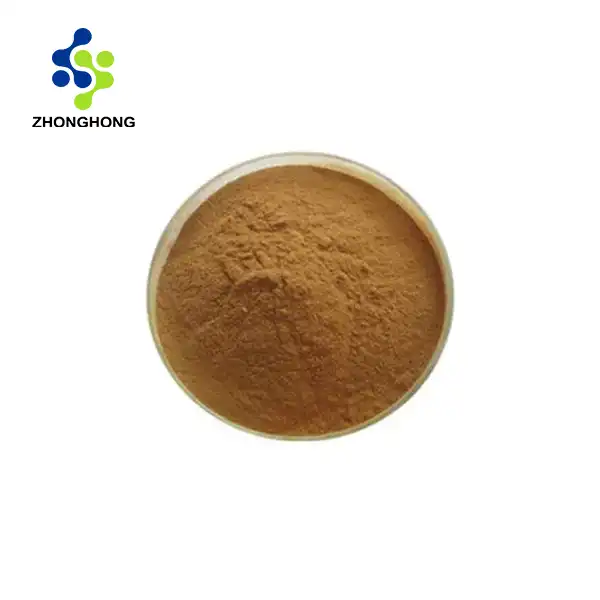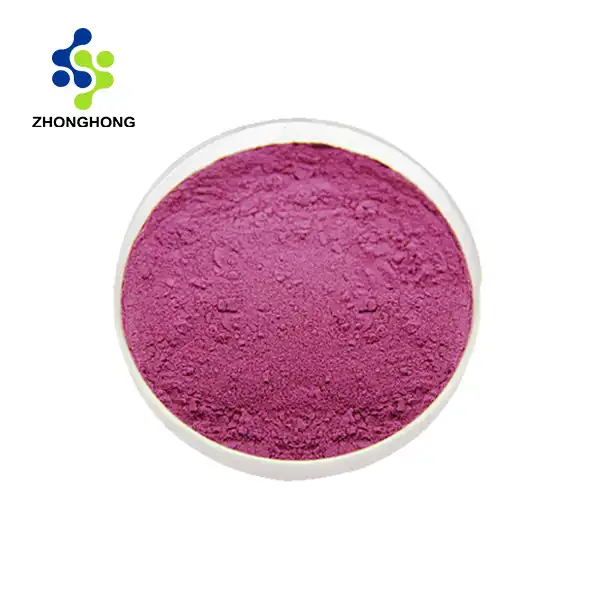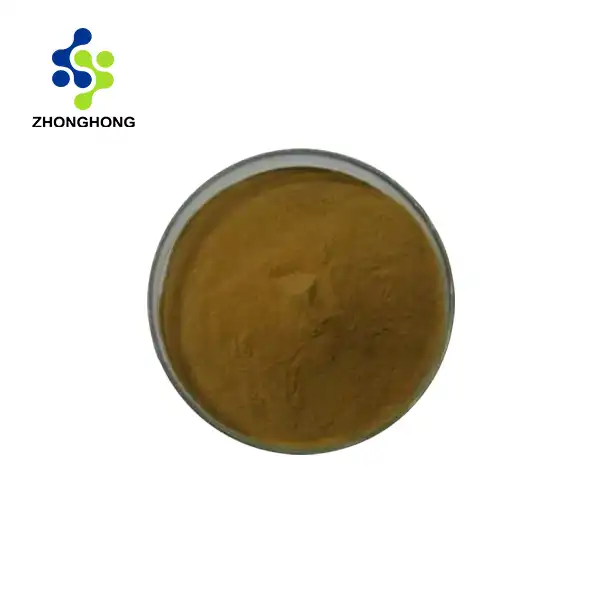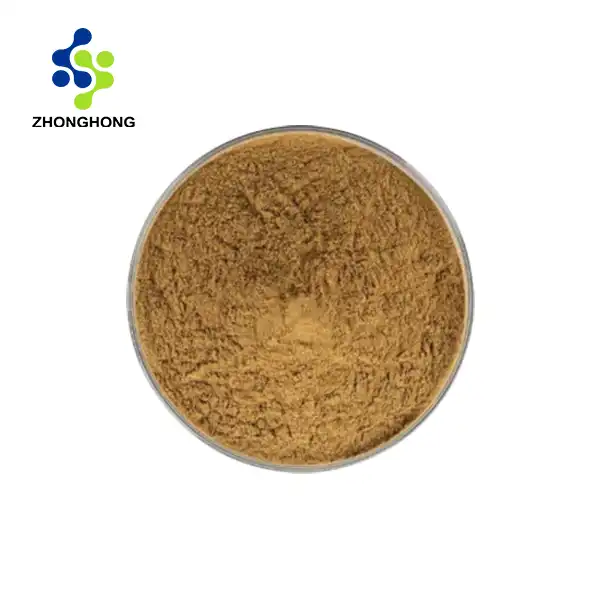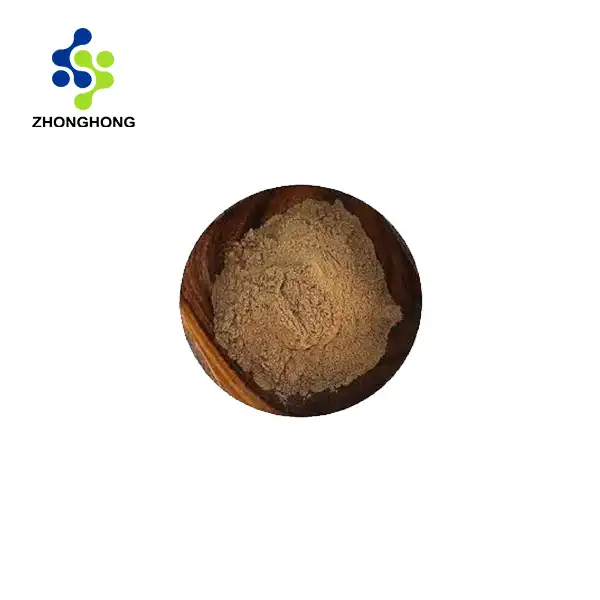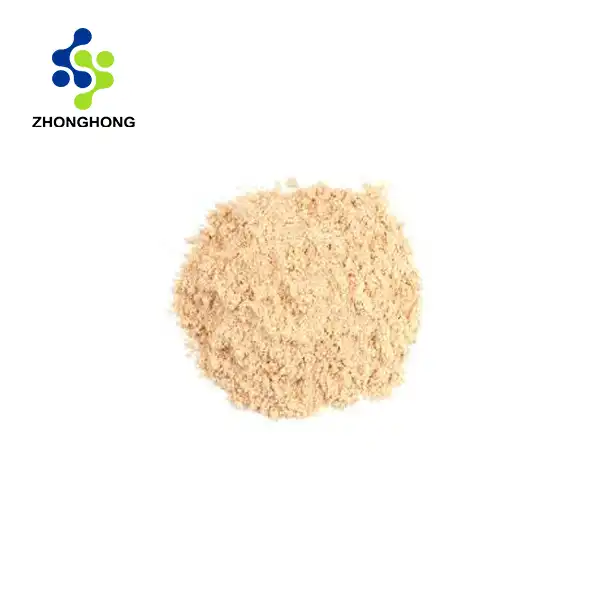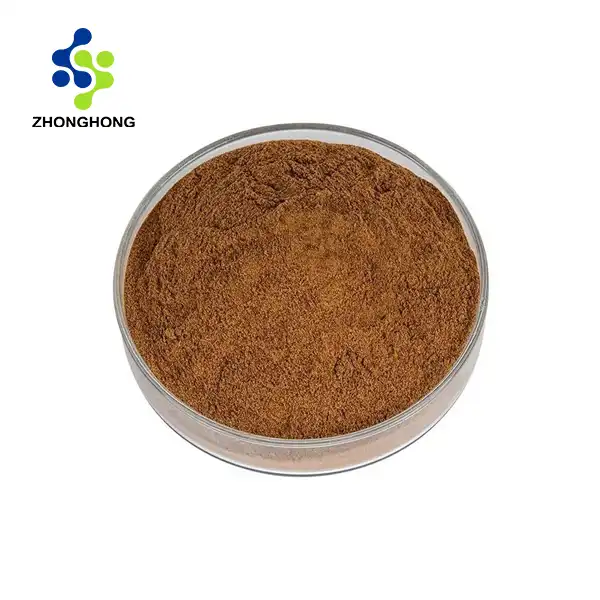The Science Behind Sodium Copper Chlorophyllin Powder
2024-11-29 11:37:43
Sodium copper chlorophyllin powder, a semi-synthetic derivative of chlorophyll, has garnered significant attention in recent years for its potential health benefits and applications. This fascinating compound, derived from the green pigment found in plants, offers a range of intriguing properties that have piqued the interest of researchers and health enthusiasts alike. In this comprehensive exploration, we'll delve into the science behind sodium copper chlorophyllin powder, examining its mechanisms of action, scientific studies, and how it compares to natural chlorophyll.
How Chlorophyllin Works in the Body?
Sodium copper chlorophyllin powder, often simply referred to as chlorophyllin, operates through several key mechanisms within the human body. Understanding these processes sheds light on the compound's potential health benefits and applications.
Antioxidant Properties: One of the primary ways chlorophyllin exerts its effects is through its potent antioxidant capabilities. As an antioxidant, it neutralizes harmful free radicals in the body, which are unstable molecules that can damage cells and contribute to various health issues. By donating electrons to these free radicals, chlorophyllin helps stabilize them, potentially reducing oxidative stress and cellular damage.
Binding to Mutagenic Compounds: Chlorophyllin has demonstrated an impressive ability to bind to certain mutagenic substances, particularly in the gastrointestinal tract. This binding action can help prevent these harmful compounds from being absorbed into the bloodstream, potentially reducing their negative impacts on the body. This mechanism is particularly relevant in the context of carcinogen exposure and cancer prevention.
Modulation of Detoxification Enzymes: Research suggests that chlorophyllin may influence the activity of certain detoxification enzymes in the body. These enzymes play a crucial role in processing and eliminating potentially harmful substances. By modulating their activity, chlorophyllin may enhance the body's natural detoxification processes, contributing to overall health and well-being.
Anti-inflammatory Effects: Some studies indicate that chlorophyllin possesses anti-inflammatory properties. Inflammation is a complex biological response that, when chronic, can contribute to various health issues. By potentially mitigating inflammation, chlorophyllin may offer protective effects against certain inflammatory-related conditions.
Wound Healing Support: Chlorophyllin has been used topically for decades to support wound healing. It is believed to promote healing by reducing bacterial growth and managing wound odor. The compound's ability to interact with and potentially accelerate tissue repair processes makes it a valuable tool in wound care.
Scientific Studies on Sodium Copper Chlorophyllin
The potential health benefits of sodium copper chlorophyllin powder have been the subject of numerous scientific studies. While research is ongoing, several key areas have emerged as particularly promising.
Cancer Prevention: Multiple studies have investigated chlorophyllin's potential role in cancer prevention. A landmark study published in the Proceedings of the National Academy of Sciences found that chlorophyllin could reduce aflatoxin-induced liver cancer in rats by up to 75%. This research sparked further investigations into chlorophyllin's chemopreventive properties.
In human trials, a study conducted in Qidong, China, examined the effects of chlorophyllin supplementation on aflatoxin biomarkers in the urine of individuals at high risk for liver cancer. The results, published in the journal Cancer Epidemiology, Biomarkers & Prevention, showed a significant reduction in aflatoxin biomarkers among those taking chlorophyllin, suggesting its potential as a dietary approach to cancer prevention.
Wound Healing: The efficacy of chlorophyllin in wound care has been supported by several clinical studies. A review published in the Journal of the American College of Certified Wound Specialists highlighted chlorophyllin's ability to reduce wound odor and promote healing in various types of wounds, including pressure ulcers and surgical incisions.
Antioxidant Activity: Research published in the Journal of Food Science demonstrated the strong antioxidant activity of chlorophyllin. The study found that chlorophyllin exhibited higher antioxidant capacity than several other natural antioxidants, suggesting its potential as a powerful dietary antioxidant.
Gut Health: Emerging research is exploring chlorophyllin's impact on gut health. A study published in the World Journal of Gastroenterology found that chlorophyllin could modulate the gut microbiome in mice, potentially offering benefits for digestive health and overall well-being.
These studies collectively paint a picture of sodium copper chlorophyllin as a compound with diverse and potentially significant health benefits. However, it's important to note that while these results are promising, more research, particularly large-scale human trials, is needed to fully understand and confirm the extent of chlorophyllin's effects.
Comparing Natural Chlorophyll and Chlorophyllin Powder
While sodium copper chlorophyllin powder and natural chlorophyll share similar origins, they differ in several key aspects. Understanding these differences is crucial for appreciating the unique properties and applications of each compound.
Chemical Structure: Natural chlorophyll is a complex molecule with a magnesium ion at its core. In contrast, chlorophyllin is a semi-synthetic derivative where the magnesium is replaced with copper and the long phytol tail is removed. This structural modification results in a water-soluble compound, unlike the fat-soluble natural chlorophyll.
Absorption and Bioavailability: Due to its water-solubility, chlorophyllin is generally considered to have higher bioavailability than natural chlorophyll. This means it's more easily absorbed by the body, potentially leading to greater efficacy. Natural chlorophyll, being fat-soluble, requires the presence of dietary fats for optimal absorption.
Stability: Chlorophyllin is more stable than natural chlorophyll, particularly in acidic environments like the stomach. This stability allows chlorophyllin to potentially exert its effects more consistently throughout the digestive system.
Color: While both compounds are green, chlorophyllin tends to have a more intense, blue-green color. This property makes it a popular choice as a natural food coloring agent.
Sources: Natural chlorophyll is found in green plants and algae, with particularly high concentrations in leafy greens like spinach and kale. Chlorophyllin, being semi-synthetic, is produced in laboratories and is typically available as a dietary supplement or ingredient in various products.
Research Focus: Much of the scientific research on health benefits has focused on chlorophyllin rather than natural chlorophyll. This is partly due to chlorophyllin's stability and standardization, which make it easier to study in controlled settings.
Applications: While both compounds have potential health benefits, their applications differ. Natural chlorophyll is primarily consumed through diet and is associated with the general health benefits of green vegetables. Chlorophyllin, on the other hand, is used more specifically in supplements, as a food additive, and in certain medical applications like wound care.
Conclusion
In conclusion, the science behind sodium copper chlorophyllin powder reveals a compound with intriguing properties and potential health benefits. From its antioxidant capabilities to its possible role in cancer prevention and wound healing, chlorophyllin continues to be a subject of scientific interest. While it shares origins with natural chlorophyll, its unique characteristics set it apart, offering distinct advantages in certain applications. As research progresses, we may uncover even more about this fascinating compound and its impact on human health. If you want to get more information about this product, you can contact us at liaodaohai@gmail.com.
References
1. Dashwood, R. H. (1997). The importance of using pure chemicals in (anti) mutagenicity studies: chlorophyllin as a case in point. Mutation Research/Fundamental and Molecular Mechanisms of Mutagenesis, 381(2), 283-286.
2. Egner, P. A., Wang, J. B., Zhu, Y. R., Zhang, B. C., Wu, Y., Zhang, Q. N., ... & Kensler, T. W. (2001). Chlorophyllin intervention reduces aflatoxin–DNA adducts in individuals at high risk for liver cancer. Proceedings of the National Academy of Sciences, 98(25), 14601-14606.
3. Ferruzzi, M. G., & Blakeslee, J. (2007). Digestion, absorption, and cancer preventative activity of dietary chlorophyll derivatives. Nutrition Research, 27(1), 1-12.
4. Kumar, S. S., Shankar, B., & Sainis, K. B. (2004). Effect of chlorophyllin against oxidative stress in splenic lymphocytes in vitro and in vivo. Biochimica et Biophysica Acta (BBA)-General Subjects, 1672(2), 100-111.
5. Lanfer-Marquez, U. M., Barros, R. M., & Sinnecker, P. (2005). Antioxidant activity of chlorophylls and their derivatives. Food Research International, 38(8-9), 885-891.
6. Yun, C. H., Jeong, H. G., Jhoun, J. W., & Guengerich, F. P. (1995). Non-specific inhibition of cytochrome P450 activities by chlorophyllin in human and rat liver microsomes. Carcinogenesis, 16(6), 1437-1440.
YOU MAY LIKE
_1728976869676.webp)
